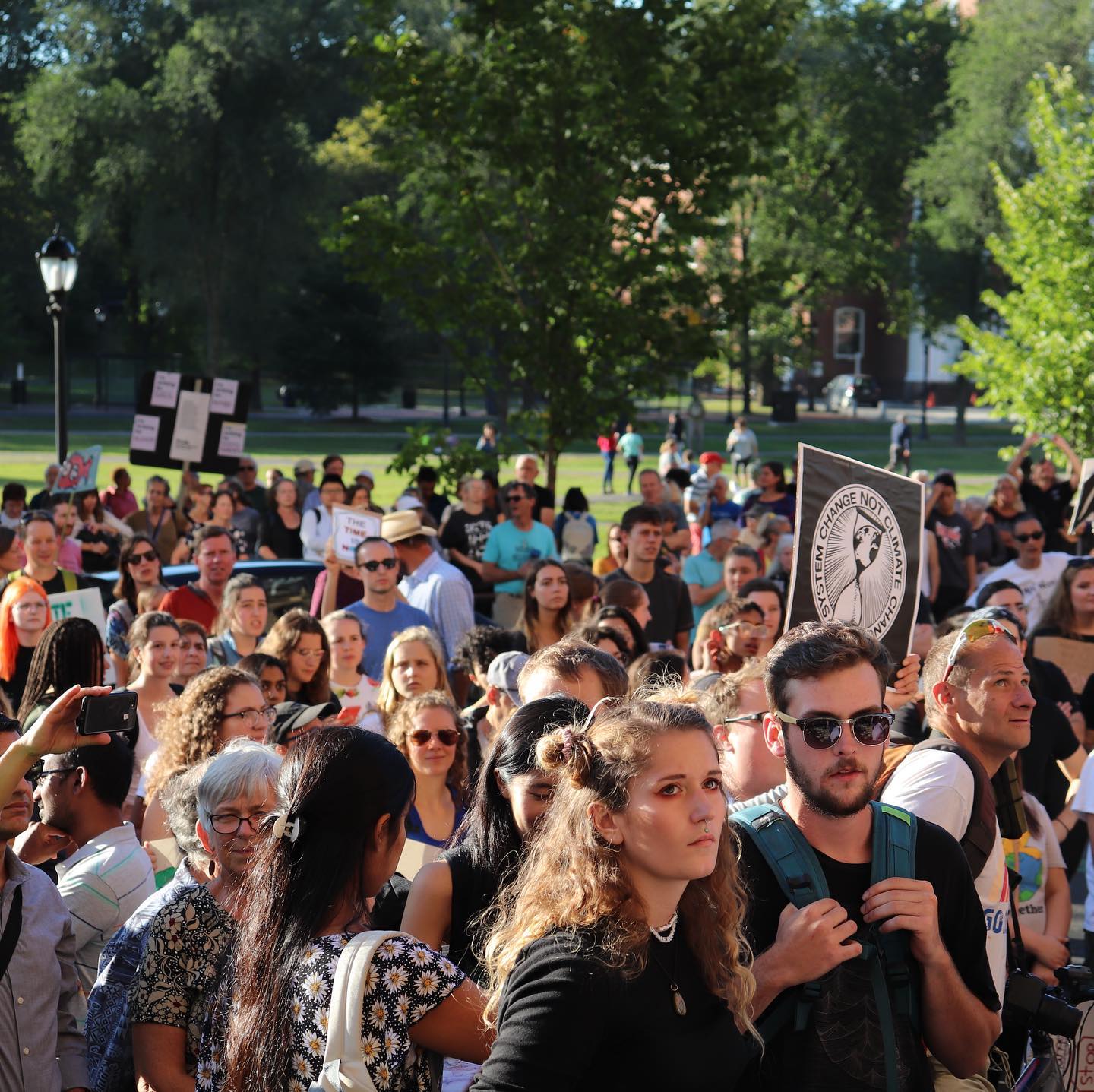
Nick Famularo
Hundreds of local high school students and other community members joined together Friday on the New Haven Green to demand action from local and national politicians to combat climate change.
High school students from the New Haven Climate Movement organized the city’s iteration of the Global Climate Strike, which began all over the world on Friday. The two-hour march was modeled as a funeral procession, with protesters marching to all four corners of the Green before eventually participating in a die-in, where all of the participants lied down on the steps of City Hall and in the middle of Church Street for two full minutes.
Adrian Huq, a local high school student and the main host of the event, commented on the unexpected magnitude of the march.
“This really became a lot bigger than we expected,” Huq said. “I feel like I’m really supported by this community and I’m really comfortable with other climate activists.”
Huq, a senior at Metropolitan Business Academy in New Haven, said they have been passionate about fighting climate change since their childhood. After working with the local climate change organization Elm Energy Efficiency Project, Huq connected with the New Haven Climate Movement back in May to collaborate on local initiatives. The group soon expanded to include students of all ages from numerous schools and began planning the march in August.
Katy Rubin, a professor at the Yale School of Drama, attended the march with her baby, commenting on the power of high school students leading the protest.
“There’s a lot of activism in New Haven that can be exclusively middle aged and white and middle class, and that is not inclusive,” Rubin said. “So I think that it should be youth-led.”
At each of the Green’s four corners, speakers discussed a specific topic about the effects of climate change, specifically deaths related to transportation, food and agriculture, climate displacement and climate justice. Both student and adult activists delivered speeches on the given themes, and mock headstones were placed on each corner to mark those affected. One such mock headstone read “R.I.P. families and communities. Death by displacement.”
In accordance with the event’s analogy to a funeral, marchers were instructed to wear black, and organizers carried a coffin that had a cutout of the Earth in it to symbolize the planet’s death.
Although the march was originally intended to be silent with the beat of a bass drum playing, organizers couldn’t help but voice their demands for change. One group of high schoolers put it quite plainly — they came out because they “don’t want to die.”
“I believe that it’s going to be our next generation that has to go through [climate change], and so if we start now hopefully our planet will be better,” high school freshman Sebastian Poole told the News. “And even for younger kids like me, they’ll be able to grow and have a future as well, instead of having to suffer.”
Justin Elicker FES ’10 SOM ’10, the Democratic nominee for New Haven mayor, was among those in the crowd. He did not speak at the march, but said he was there to “support the work that many people are doing” on climate change advocacy.
“Obviously climate change impacts young people so much more, and high school students being here allows them an opportunity to become leaders and practice leadership skills and lead adults in making responsible decisions,” Elicker told the News. “It’s inspiring.”
City Hall is located at 161 Church Street in the Downtown section of New Haven.
Amelia Davidson | amelia.davidson@yale.edu







